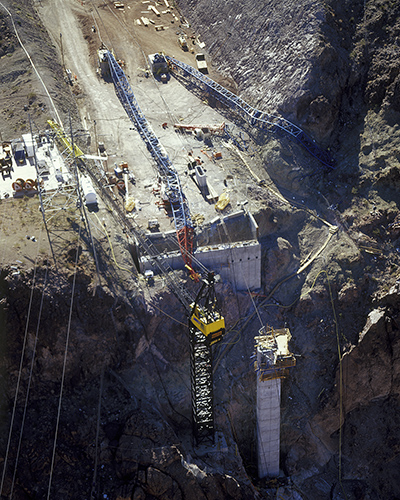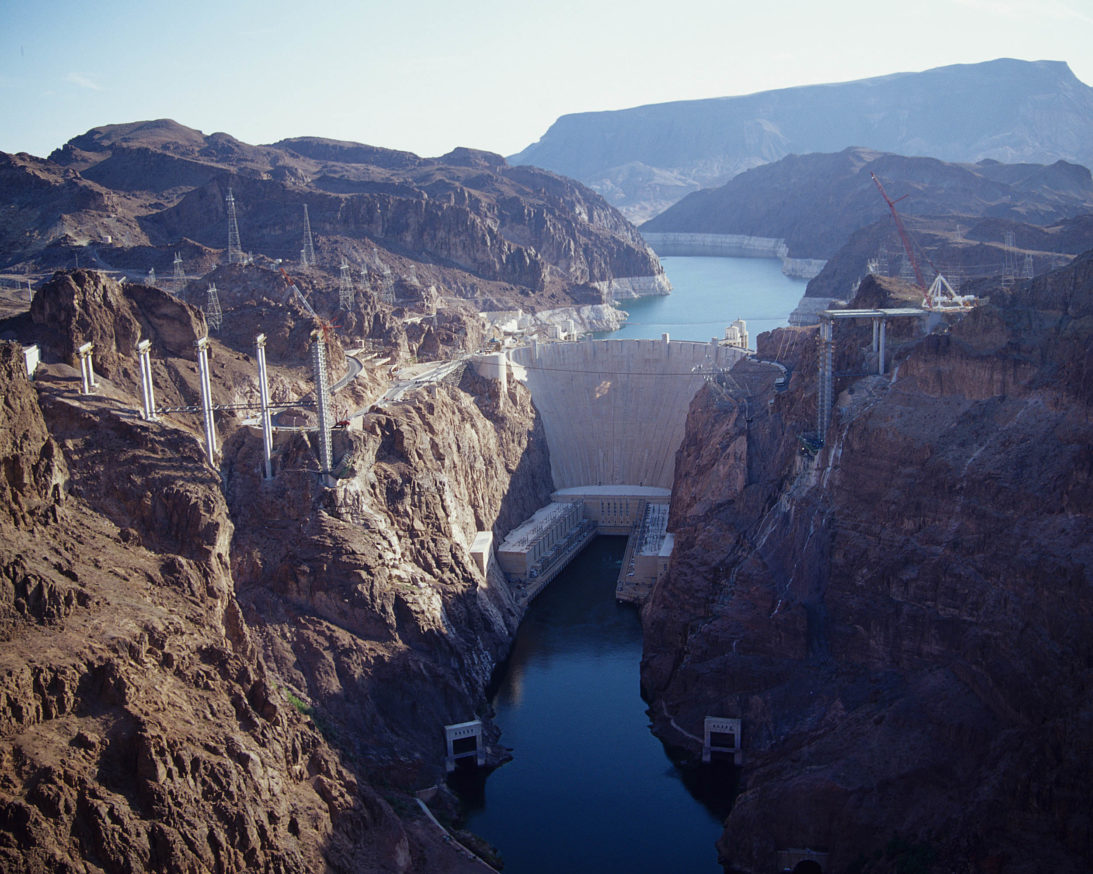Hoover Dam By-Pass Bridge Collapse Evaluation and Remediation
The Hoover Dam By-Pass Bridge was part of the new alignment of U.S. Highway 93 across the Black Canyon between Arizona and Nevada and was located approximately 1,500 feet downstream of Hoover Dam. Total length from abutment to abutment was approximately 1,090 feet. The structure was the first concrete-steel composite arch bridge built in the United States and includes the longest cast-concrete arch in the Western Hemisphere. The Obayashi Corporation and P.S.M. Construction USA, Inc. Joint Venture (Obayashi/PSM JV) was awarded the bridge construction contract by The Federal Highway Administration (FHWA). HDR Engineering, Inc., and T.Y. Lin International were the bridge design team.

During high winds on September 15, 2006, the Nevada South tower buckled and collapsed. During the collapse, the falling sections severed multiple support cables of the Nevada North tower causing it to fall to the north. The resulting collapse of both Nevada towers imparted dynamic loading to the two Arizona towers, causing both to fall westward toward the Black Canyon of the Colorado River.
Haag Engineering Co. was retained to determine factors causative of the collapse and evaluate duties and responsibilities of the parties involved in the design, erection and use of the specialized equipment. During recovery efforts, Haag assisted in the design/evaluation of a new cableway system, erection and load testing. The Haag team was assigned to the project from collapse on September 15, 2006 until the connection of the arches in 2010.
The Hoover Dam By-Pass Bridge was successfully completed after this set-back, and officially named the “Mike O’Callaghan–Pat Tillman Memorial Bridge”. Opening ceremonies were held on October 19, 2010. The bridge has been vital to improving traffic on Interstate 93, between Phoenix and Las Vegas and between the United States and Mexico, ever since.
